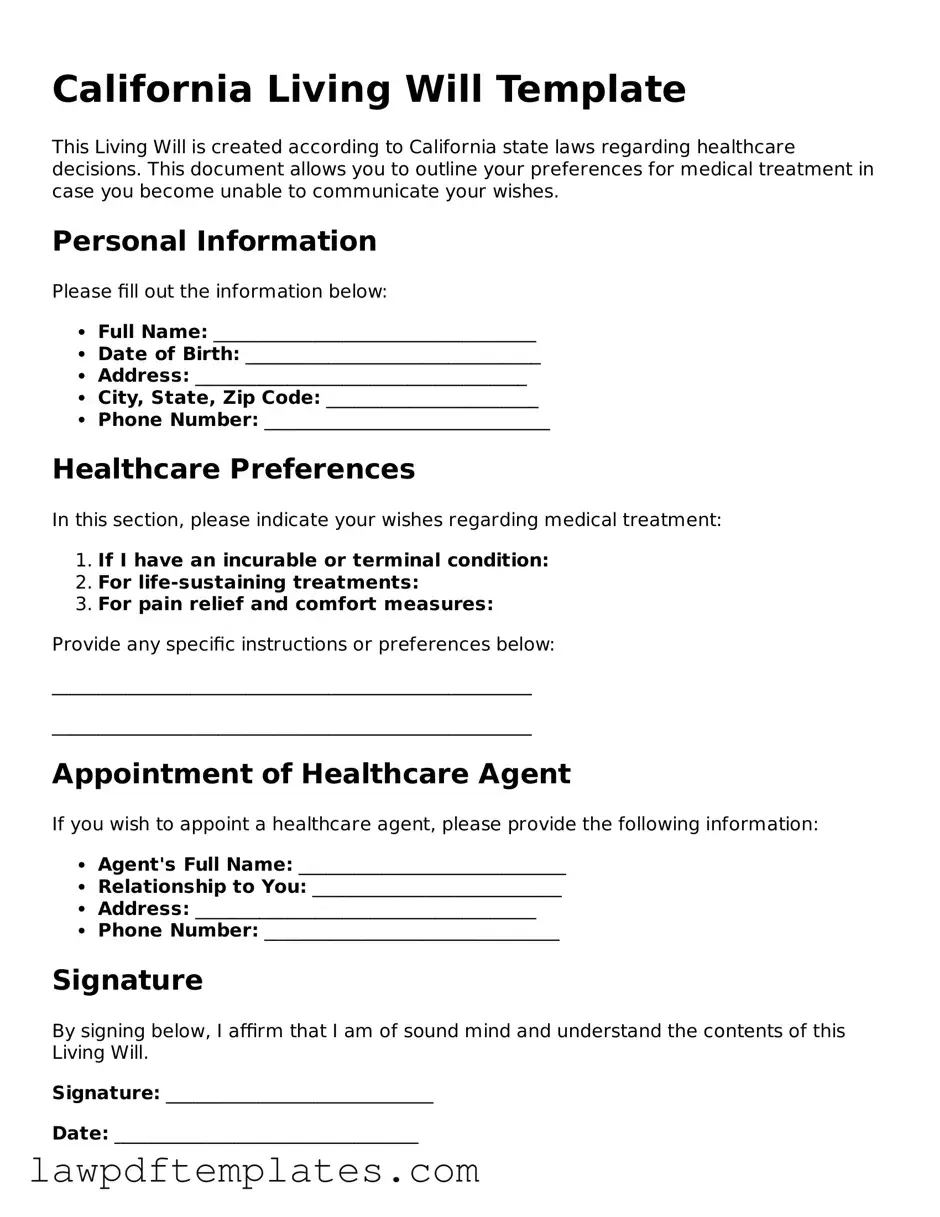Creating a Living Will in California is an essential step for anyone wanting to ensure their healthcare wishes are honored. However, many individuals make common mistakes that can lead to confusion or even legal complications. Here are ten mistakes to avoid when filling out the California Living Will form.
First, many people fail to clearly define their medical preferences. A Living Will should specify what types of medical treatments and interventions one does or does not want. Vague language can create uncertainty for healthcare providers and loved ones. Being specific helps ensure that your wishes are understood and respected.
Another frequent error is neglecting to sign and date the document. Without a signature, the Living Will may not be considered valid. It’s crucial to complete this step to avoid any challenges regarding the authenticity of the document.
Some individuals overlook the importance of witnesses. California law requires that the Living Will be signed in the presence of at least one witness, who is not a family member or someone who stands to inherit from the individual. Failing to have the appropriate witnesses can invalidate the document.
People often forget to update their Living Will as their circumstances change. Life events such as marriage, divorce, or the diagnosis of a serious illness can affect one’s healthcare preferences. Regularly reviewing and updating the document ensures that it reflects current wishes.
Misunderstanding the difference between a Living Will and a Durable Power of Attorney for Healthcare is another common mistake. A Living Will outlines specific medical treatment preferences, while a Durable Power of Attorney allows someone to make healthcare decisions on your behalf. Both documents serve different purposes and should be used together for comprehensive planning.
Some individuals do not communicate their wishes to family members or healthcare proxies. It’s not enough to fill out the form; discussing your preferences with loved ones ensures they understand your desires. This conversation can prevent potential conflicts during difficult times.
Another mistake is failing to consider the implications of the choices made in the Living Will. For example, opting for “no resuscitation” can lead to significant emotional distress for family members. Understanding the emotional weight of these decisions is crucial for both the individual and their loved ones.
In some cases, people mistakenly think that a Living Will can cover all aspects of their healthcare. However, it primarily addresses end-of-life decisions. Other healthcare decisions may require separate documentation or discussions with healthcare providers.
Additionally, individuals sometimes choose not to consult legal or healthcare professionals when drafting their Living Will. Professional guidance can provide clarity and ensure that the document adheres to California laws, reducing the risk of errors.
Lastly, many forget to keep copies of their Living Will in accessible places. It’s important to provide copies to healthcare providers, family members, and anyone designated as a healthcare proxy. This ensures that your wishes can be honored when the time comes.
By avoiding these common mistakes, individuals can create a Living Will that truly reflects their healthcare wishes and provides peace of mind for themselves and their loved ones.
